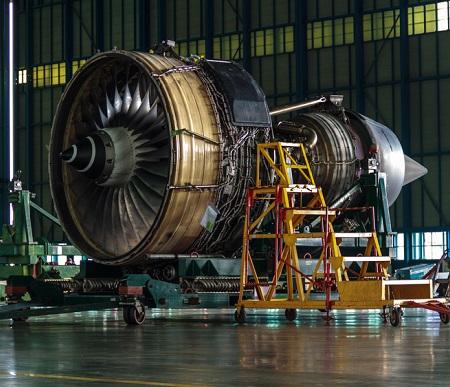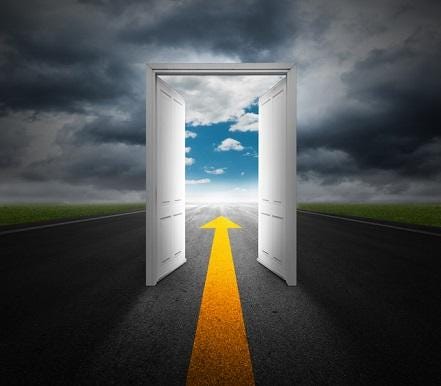GE Doubles Down On 'Digital Twins' For Business KnowledgeGE Doubles Down On 'Digital Twins' For Business Knowledge
Digital twins involve the building of digital models of industrial assets such as turbines. Gartner recently named the technology as one to follow in 2017, and here's how GE is bringing it to the mainstream.


6 Signs You Need A Multi-Cloud Strategy
6 Signs You Need A Multi-Cloud Strategy (Click image for larger view and slideshow.)
This month, Gartner issued a forecast, the "Top 10 Strategic Technology Trends" likely to occur in 2017. Near the top of the list was "digital twins." In this approach, a digital model of a machine or other asset is built and run in a virtual environment.
information aired this concept on July 20, when it cited GE's use of an internal modeling platform to construct digital twins, as well as the company's plans to license this technology as a generally available, Software-as-a-Service (SaaS) offering in 2017.
GE didn't invent the concept. That credit would go to professor Michael Grieves at the University of Michigan in 2001, according to The Economist in a blog posted Sept. 30, 2015.
Grieves's whitepaper on the topic spells out how digital twins are needed for manufacturing excellence and products that can be maintained so that they do not fail.
GE, however, is striving to be a pioneer in the field due to the importance of the industrial assets that it manufactures: large, complex, capital intensive items such as jet engines, wind turbines and locomotives.
Each part in a complex piece of equipment needs a digital twin, and the system as a whole gets modeled as well, said Colin Parris, vice president of software research at GE, in a recent interview.
One value in building a digital twin is that information from customers and partners regarding the way the product functions at its point of installation can be included in the model. Older methods of tracking products rely primarily on the manufacturers' own information, Parris said.
Chances are that the experiences of one customer are relevant to many others using the same product, but customers have few ways to combine their collective experience.
As GE moves into leasing capital assets for a set number of hours of production, rather than sell them outright, it can monitor and collect information on them as they run. Learning from one customer's installation when a part was about to fail can prevent failure in dozens of the other sites that use a part with the same age and wear and tear.
GE is in the process of collecting that information today, feeding it into digital twin models, and letting its Predix analytical engine digest what it might mean. Airlines, oil rigs, wind farms, and hydroelectric plants are all interested in preventing catastrophic failures.
Real-world feedback on the beginnings of aberrant performance or behavior in an industrial asset can help prevent failure and trigger the right amount of needed maintenance, Parris noted.
Another area has to do with the performance of the asset itself.
For example, a wind farm might have turbines placed in such a way that reducing the energy absorbed by the front-line blades increased the efficiency of those behind them, allowing the group as a whole to perform better, Parris noted.
"Sometimes if you operate the first turbine at slightly less than its optimum rate, it lets the others behind it operate more closely to their optimum performance." Integrating the speeds of wind turbines absorbing the wind's energy in depth is a new field with little experience behind it. But closer monitoring, machine learning, and a modeling of results based on digital twins may yield substantial benefits, he predicted.
The same is true in many other large-scale industrial projects.
A liquefied natural gas (LNG) tanker loading up at a plant may have five or six pipes transporting the super-cold fuel into the hold of a ship. Knowing how fast to pump the LNG through the pipes to fill the ship is important information. Finding an optimal steady rate would beat trying to scale up or scale back the process in individual pipes as the loading proceeds.
"Keeping the flow steady at a highly reliable rate, that's where you make your money," he said.
Likewise, electricity generating plants with turbines that operate at very high temperatures present special challenges.
In some plants, natural gas boils water to produce steam under high pressures and temperatures. The equipment may be running in a 2,000- or 3,000-degree environment, and it would take six weeks to cool down in the event of an equipment failure. It would likewise take at least two weeks to bring a turbine back online once it was repaired, by slowly heating it up.

GE schematic of a windmill turbine, part of a digital twin record.
Preventing the failure, or anticipating it and doing the required maintenance before failure occurs, can shorten outages or fit them into a planned sequence at a plant, Parris noted.
"The twin does early warning. It gives you anomalies in operations way ahead of failure," showing how a part will take on higher temperatures or more vibration long before an actual failure occurs.
In some cases, GE is attaching sensors in places they've never been in order to collect information on high-stress parts as they start a new work cycle. In the intensive heat of turbines, the sensors will literally burn away as the machine achieves its full operating temperature. Meanwhile GE has learned about the characteristics of the part as it goes from cold to hot.
Digital twins give airlines a better idea of what happens when a jet flies through a flock of birds, or through dust storms in hot environments.
"In dusty environments, the thermos-variable coating wears away." GE and the airline operator need to know at what rate and when the metal underneath the coating will be exposed. The coating is one of the factors preventing the metal underneath from warping, Parris said.
GE is currently modeling turbine blades on 35,000 planes, along with the engine "shrouding," or casing, and jet-engine nozzles, which are all working together, Parris said.
"We look at all three parts as a digital twin. When we do, we can see where the most money is being spent to keep the engine functional, and how that money might be spent most effectively -- information that airline maintenance crews need to know. By giving the turbine blades a particular chemical wash, the dust particles can be periodically removed and their thermal coatings maintained for a longer period."
GE is deep into the process of instituting such digital-twin modeling at this point, and will have a lot of experience to share as other companies look to create their own digital twins, possibly using its software modeling platform next year.
A digital twin is not just an abstraction in bits. The software used with the model "can be focused on the business outcome, where are you spending the most money" and what you might do about controlling costs, Parris said.
About the Author
You May Also Like






